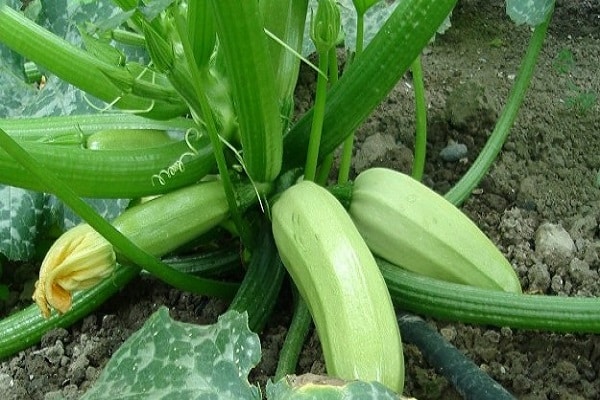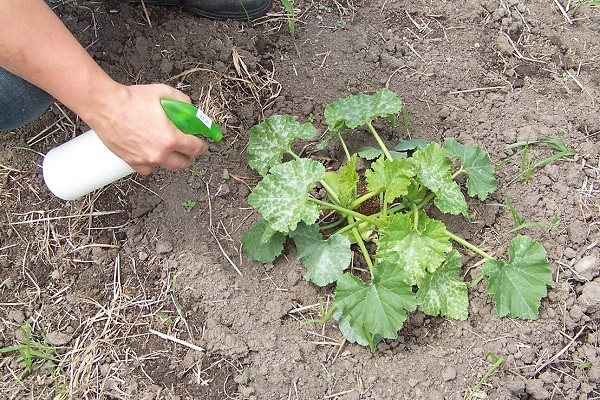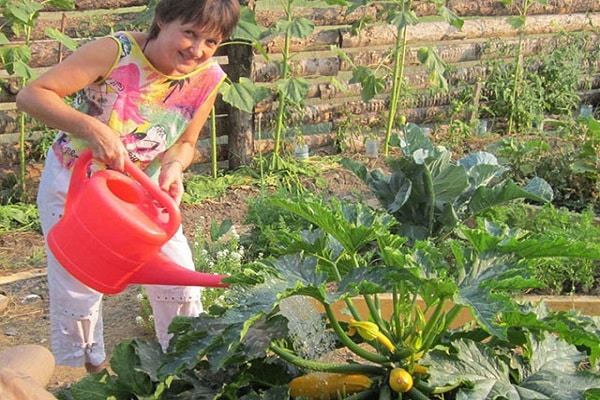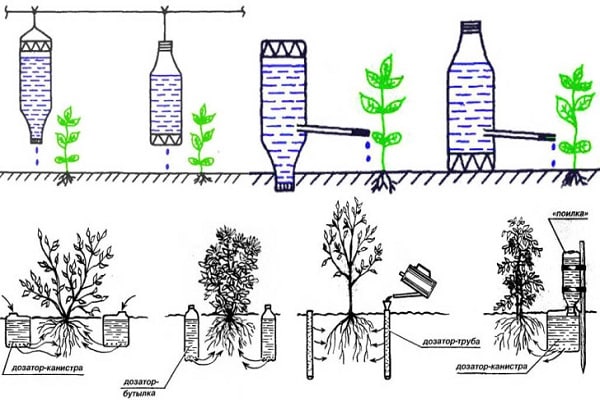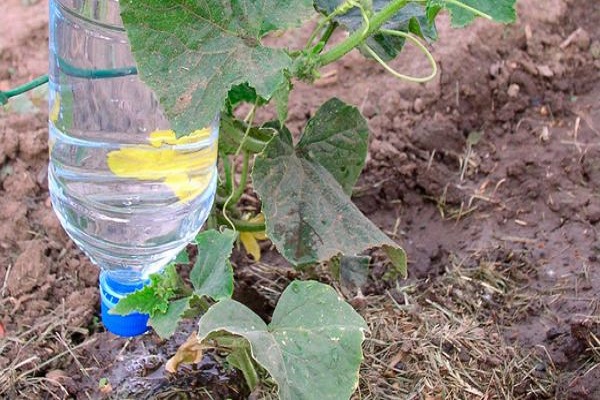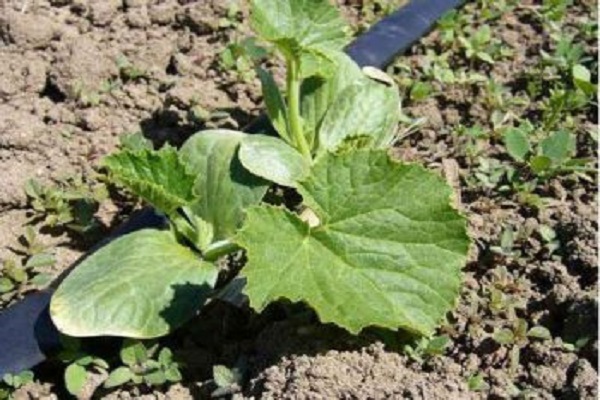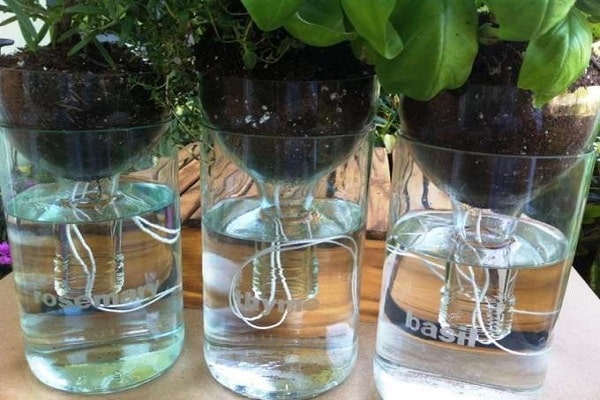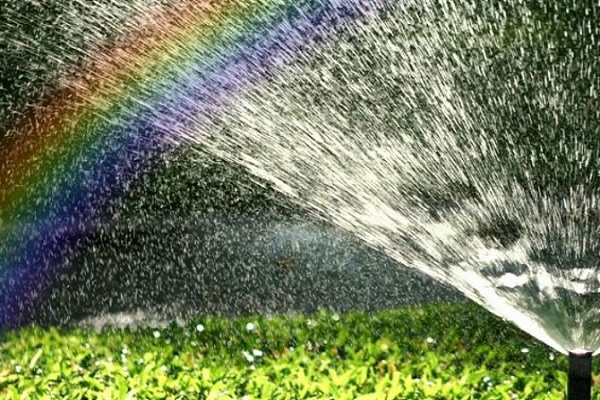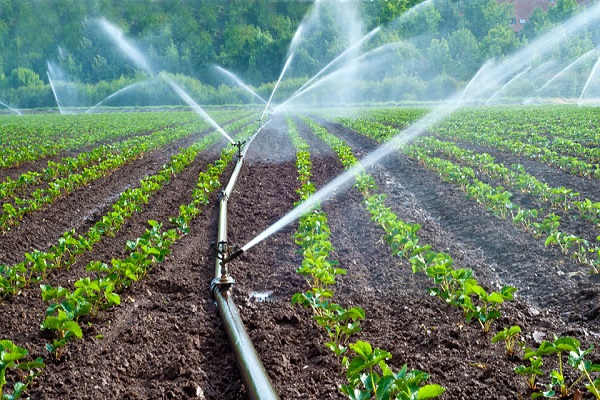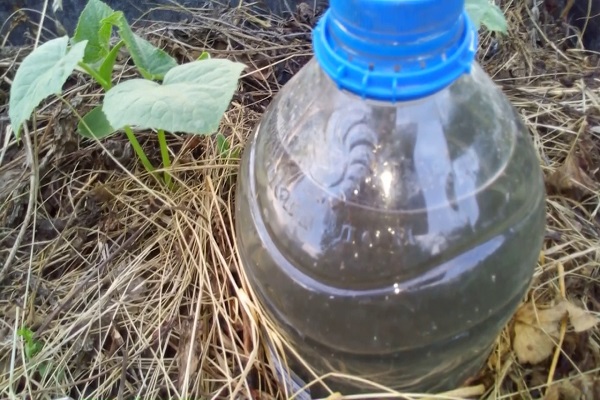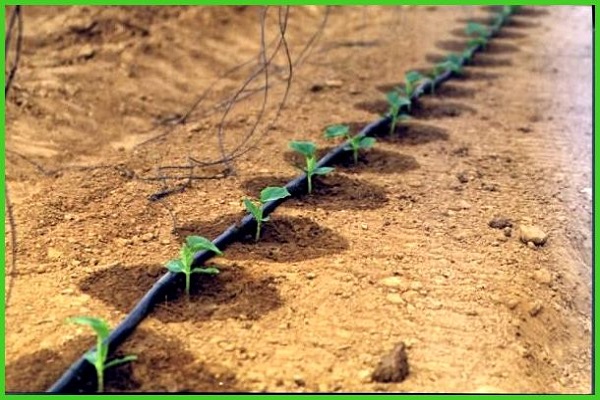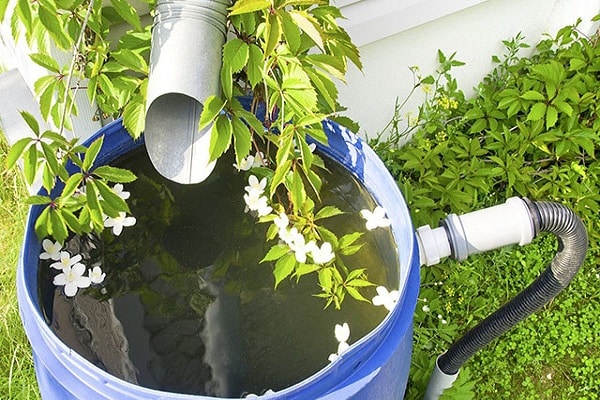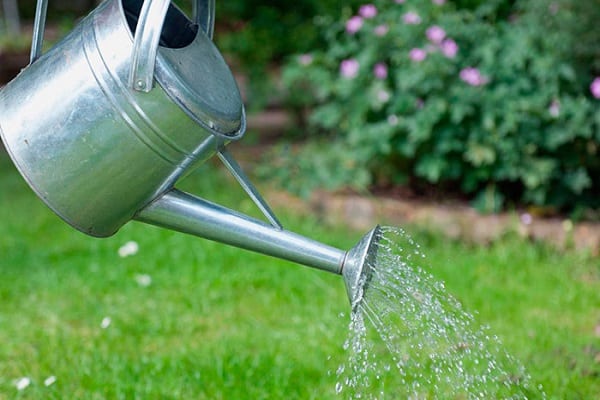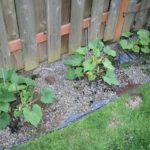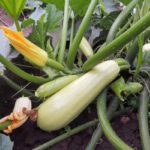When growing zucchini, it is necessary to provide adequate care for the planting. One of the most important factors affecting plant growth is watering zucchini. This problem is especially acute in those regions where there is a dry or hot climate. There are several types of crop irrigation, each of which has its own distinctive characteristics.
- Requirements for soil moisture levels when growing zucchini
- The effect of excess and insufficient moisture
- How to water zucchini in open ground at the dacha: 4 methods
- Method 1: bottle-based metered watering system
- Method 2: using plastic containers
- Method 3: many holes in the hose (jet irrigation)
- Method 4: watering with a “wick”
- Methods of watering industrial zucchini plantings
- Gravity method
- Sprinkling
- Subsoil
- Drip watering of zucchini
- How much to water zucchini: watering norms
Requirements for soil moisture levels when growing zucchini
Water is an essential component of healthy plant growth and development. This is due to the fact that it is a component of cell sap, plasma. Water is also responsible for distributing nutrients and regulating plant temperature. In order for water to perform these functions fully, you need to know how often to water zucchini planted in open ground.
It is worth considering that zucchini react negatively not only to drought, but also to excess moisture in the soil, as this provokes damage to the root system due to oxygen deficiency. You also need to know that zucchini also react negatively to dry air. Its foliage begins to wither due to active evaporation of moisture. That is why the method of watering the squash bed should be chosen based on the surrounding climate conditions.
The effect of excess and insufficient moisture
Zucchini reacts very sharply to lack of moisture during the first half of the growing season. It is at this time that the active development of the root system and the increase in fruit mass are observed. At this time, even a short-term drought can disrupt the process of growth and development.
The maximum amount of moisture is necessary for the full development of fruits in July and August. By ensuring regular watering during this period and before the fall in temperature begins, the likelihood of obtaining a large, high-quality harvest increases. Watering should be moderate, since not only a deficiency, but also an excess of moisture negatively affects various plant systems:
- With a lack of moisture, the reproductive system promotes the formation of a large number of male flowers, in the place of which fruits cannot subsequently develop. Excess water does not have much effect on this system.
- When there is a lack of moisture, the roots grow deeper into the soil. And when there is an excess of water, the root system lies close to the surface layer of soil. Due to insufficient oxygen in the soil, root hairs gradually die off.
- An excess of moisture greatly weakens the plant’s immunity, and it begins to be affected by diseases caused by fungi.
- With insufficient watering of the soil in the heat, zucchini form small fruits. If you provide excessive watering, the level of sugar content in zucchini will decrease.
- If the crop is not watered in the required amount, its growth will be slow. If you provide excessive watering until the roots die, the plant begins to grow actively and then is inhibited.
That is why when growing zucchini it is necessary to maintain an optimal watering regime.
How to water zucchini in open ground at the dacha: 4 methods
Any methods of watering zucchini are based on meeting three conditions:
- it must be timely;
- The plant needs to be watered regularly;
- Watering should be selected based on varietal characteristics.
Also, before you understand how to water zucchini in open ground, you need to estimate the size of the plot.
Method 1: bottle-based metered watering system
One of the best options for watering zucchini in open ground is the use of dosed watering techniques. It is provided using plastic bottles. In assembled containers of large volume, the bottoms should be removed, and 4–6 holes should be made in the plugs to allow the liquid to flow out drop by drop.The best option is to pierce the corks using an awl.
After the bottles are completely ready, it is necessary to form a hole 10–15 centimeters deep. It should be done 15–20 centimeters from planting. Next, you need to bury the bottle with its neck down, tilting it at an angle of 45 degrees. The bottles are then filled with water.
It is worth considering that this method of watering during the period of fruit formation is not suitable, since the plant will not have enough moisture. At this time it will be necessary to provide additional watering.
Method 2: using plastic containers
This method of watering when growing zucchini also involves the use of plastic containers with a cut bottom. The difference is that the containers are not buried, but hung close to the plant crop. In this case, you do not need to make holes in the plug, you just need to unscrew it a little.
To prevent the soil from being washed away after watering the plant where water constantly drains, this area should be covered with mulch or film. During fruit formation, flowering, and fruiting, it is necessary to ensure that water drips under the root of the plant and not onto the green mass.
Method 3: many holes in the hose (jet irrigation)
It is also fashionable to organize watering of zucchini using a hose with holes made along its entire length. In this case, the holes should be located opposite the planted zucchini. The manufactured hose is dug in and connected to the water supply system. Using this technique, water enters the root of the plant and does not evaporate from the soil. When proper watering is ensured, the soil on the surface is not washed away and remains dry.
Method 4: watering with a “wick”
One of the most economical methods of watering zucchini is to use a “wick”. As in growing zucchini in open ground moisten the soil:
- containers filled with water are placed every 2 meters of the ridge;
- a long rope is made from fabric;
- the tourniquet is buried next to the ridge to a depth of 10–15 centimeters, while its ends are lowered to the bottom of the containers.
Gardeners recommend using this method of watering because of its surface tension effect: the fabric is saturated with water and moves to the soil, releasing moisture to the root system.
Methods of watering industrial zucchini plantings
To ensure watering of zucchini grown on an industrial scale, other methods are used. Their choice is based on the following factors:
- on an affordable budget;
- on the relief of the land plot;
- on the goals and objectives of irrigation;
- on water availability.
There are 4 methods of watering industrial zucchini plantings:
- drip;
- rain;
- gravity;
- subsoil
Each of them has its own differences and features.
Gravity method
This technique is divided into two types: furrow and estuary. The first is to supply liquid to the plant crop along the rows. And the second one is in complete flooding of the area. This method of watering is used for the full development of zucchini not only for industrial agricultural plots, but also for country gardens.
Sprinkling
This irrigation technique is mainly used by large companies involved in growing zucchini. It is as follows: under the influence of a pump, liquid is sent through pipes to sprayers. Next, large droplets are formed.
One of the types of sprinkling is the aerosol, finely dispersed method. Specialized nozzles spray water, forming fog. This method is optimal in sultry, hot weather.
Subsoil
There is another method of industrial irrigation on the site: subsoil. It is as follows: metal or polymer pipes are placed between rows at a depth of 25 to 40 centimeters. Holes are made in them under the plant crop. Water is then released through the pipes, supplying moisture to each plant. This method of watering is good because the zucchini leaves remain dry.
Drip watering of zucchini
Using a drip irrigation system is a high-tech and modern way of irrigating crops. To ensure this, a polymer drip tape is placed between the rows. Then the rate of moisture supply is programmed and sent directly to the zucchini.
How much to water zucchini: watering norms
It is worth considering that the norms for watering zucchini in different regions of the country vary depending on climatic conditions. Irrigation should be carried out in volumes of 1500–7000 cubic meters of water per 1 hectare of plantings. In this case, the volume of water is divided into 11 or more irrigations. The volume of water should be calculated taking into account the following factors:
- soil moisture level before adding moisture;
- watering method;
- granulometric composition of the soil substrate;
- depth of the irrigated layer.
If the area experiences low precipitation, it is necessary to apply the maximum amount of moisture. In this case, it is necessary to evaluate the characteristics of the natural area. The greatest volume of water is needed during flowering and fruit formation. You need to irrigate the soil so that moisture reaches 15–20 centimeters deep. Watering the plantings is required in the afternoon.
From the moment the ovaries form on a plant crop until the end of harvesting work, the area needs to be watered every week.Minimum: once every 10 days, in which case the NV level should not be allowed to drop below 80%, or rise above 90%.
In the absence of maintaining these indicators, there is a deterioration in the supply of oxygen to the top layer of soil, increasing the risk of crop disease. Therefore, watering should be carried out at an average ambient temperature of 15 degrees above zero. Plants should be watered with settled water in the morning or evening.

